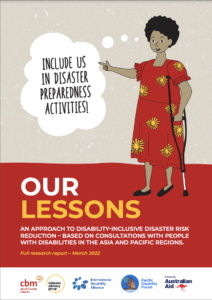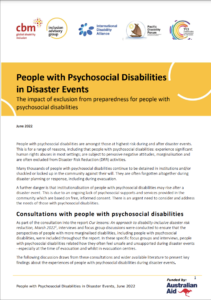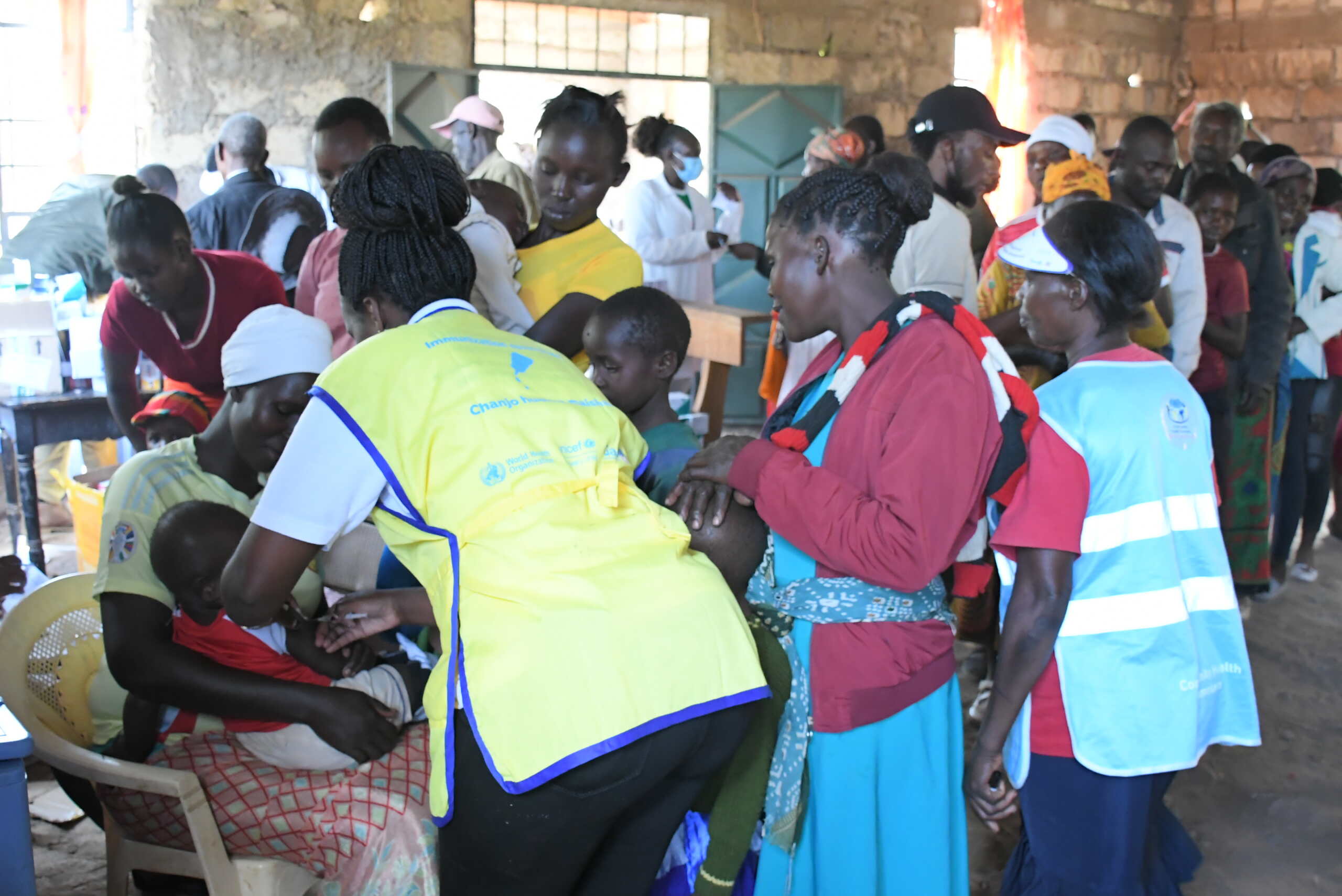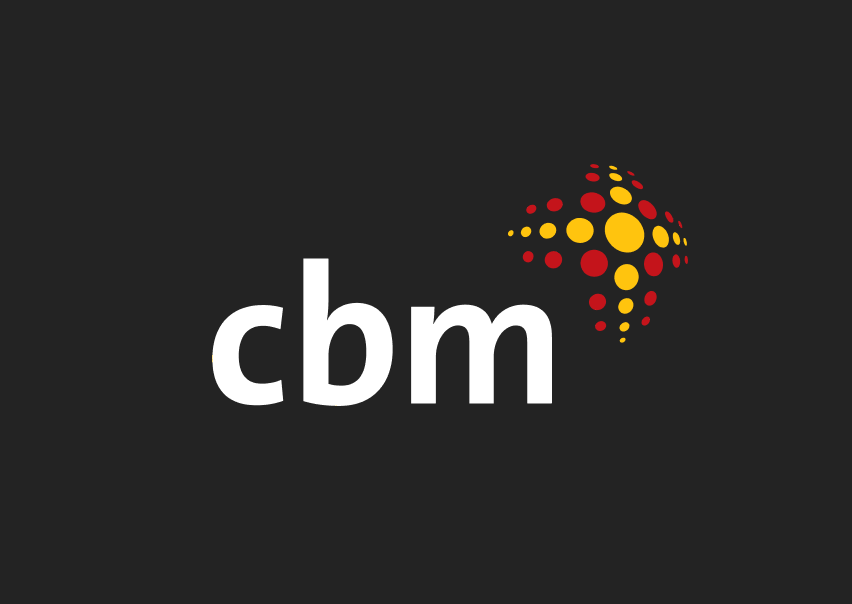Our lessons: an approach to disability-inclusive disaster risk reduction in Asia and Pacific
Pacific, Stories | June 25, 2024
The Asia and Pacific regions have the highest rate of disaster events worldwide, and one in six people have a disability. Communities need to be prepared for disasters, but people with disabilities continue to be left out of disaster preparedness activities, placing them at greater risk.
To help disability-inclusive disaster risk reduction become a reality, in 2020, the Pacific Disability Forum (PDF), the International Disability Alliance (IDA), and CBM Global’s Inclusion Advisory Group came together to conduct inclusive consultations across the Asia and Pacific regions, to seek the perspectives, experiences and priorities of the diverse range of people with disabilities in relation to disaster preparedness, response and recovery.
This was made possible through funding from the Australian Government through the Department of Foreign Affairs and Trade.
Surveying people with disabilities
A total of 506 people from across Asia and the Pacific completed an online survey to share their experiences of disability and disasters.
An additional 80 people participated in virtual focus group discussions and key informant interviews in the South and East Asia regions. 274 people participated in face-to-face focus group discussions and key informant interviews in five Pacific Island Countries.
The results of the research
 Full Report
Full Report
Drawing upon these consultations, the Full Report highlights the stories and experiences of people with disabilities from Asia and the Pacific in recent disasters, including COVID-19. The report also delivers findings and recommendations from the sub-regions to inform governments, the development and humanitarian sectors, and other actors involved in disaster policy, mitigation, and response.
 Short report
Short report
The Short Report is an abridged version of the Long Report. It summarises the key information from the Long Report, including graphs, statistics and quotes from people with disabilities who participated in the research, as well as a summary of the recommendations from the research.
 Easy English
Easy English
The Full Report was made available in Easy English; a writing style that is clear and easy to understand to help people who find it hard to read and understand English. We worked with a specialist agency, Access Easy English, who wrote, designed and coordinated the testing of the documents.
 People with Psychosocial Disabilities in Disaster Events factsheet
People with Psychosocial Disabilities in Disaster Events factsheet
People with psychosocial disabilities experience greater levels of stigma and marginalisation when compared to people with other impairments. They are often excluded from community disaster risk reduction activities because of fear and misunderstanding. A separate factsheet was produced that specifically addressed the research findings on the experiences of people with psychosocial disabilities in disaster events.
Presenting the findings
The finding from the survey, group discussions and interviews was meant to inform the Asia Pacific Ministerial Conference on Disaster Risk Reduction (APMCDRR) to be held in Brisbane in 2020. People with disabilities who had participated in the research were to speak about their lived experience of disability and disaster.
The conference was postponed due to the COVID-19 pandemic.
The funding assigned for the conference was repurposed to produce video and other documents allowing people with disabilities to speak about their experiences in their own words.
People with disabilities share their experiences of disaster events
People with disabilities who participated in the research were invited to participate in a video reflecting on their experiences of planning for and experiencing disaster events. All videos include English captions and International Sign.
This longer video was then broken into four small videos: Asia region, Pacific region, evacuation centres, and inclusive communication. All videos include English captions and International Sign.
Asia region
Pacific region
Evacuation Centres
Inclusive Communication
The importance of disability-inclusive disaster risk reduction: animated scenarios
To illustrate the importance of disability-inclusive disaster risk reduction, two animated videos were developed – one for the Asia region and one for the Pacific region. The videos use animation to depict a disaster event scenario, showing the difference when people with disabilities are included in disaster preparedness activities. Both videos include English captions and International Sign.
Asia region
The Asia region video includes English and Bahasa captions and International Sign.
Animated video – Pacific
The Pacific region video includes English and Bislama captions and International Sign.
Our Lessons Webinar
On 31 March 2022, a webinar was held to launch the research findings. People with disabilities who contributed to the research were invited to participate alongside other speakers from PDF, IDA and CBM IAG. Live captioning was provided in English, Bahasa, Nepali, Tagalog and Vietnamese. Auslan and International Sign interpreters were also present.
The research found that despite their willingness and desire to be included in DRR, the majority of people with disabilities were still not included or consulted in their community’s disaster preparedness plans. The disproportionate risk of people with disabilities does not detract from their capacity and capability, which, as the findings of this study discussed, has historically prevented people with disabilities from being included in DRR efforts.
The continued exclusion of people with disabilities means DRR efforts across Asia and the Pacific cannot fully succeed, as those most likely to be negatively impacted are being excluded.
https://www.cbm.org.au/stories/disability-inclusive-disaster-risk-reduction-asia-pacific
Related Stories

Coordinating inclusive health outreach in Meru County
For many households in Meru’s rural and remote areas, basic health services are physically...

Share your advocacy preferences with us
Thank you for helping us to advocate for the one billion people with disability globally. CBM Australia advocate across...

Advent 2025: Jesus’ way leads to fullness
The way of Jesus gives people freedom and empowers them to live out their God-given purpose. The last few weeks...
